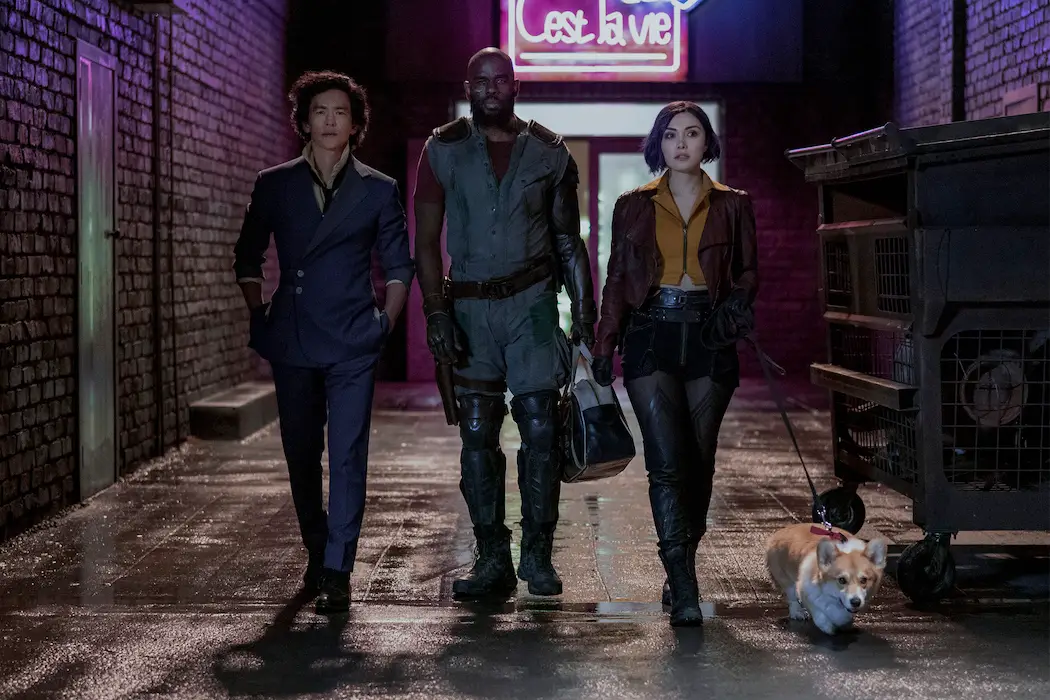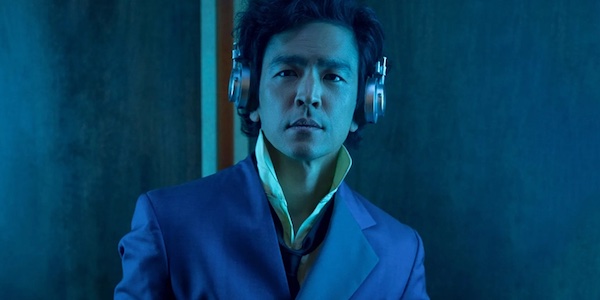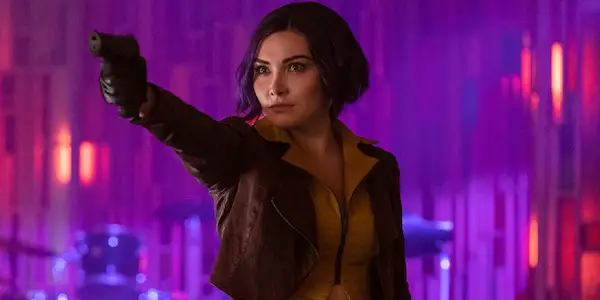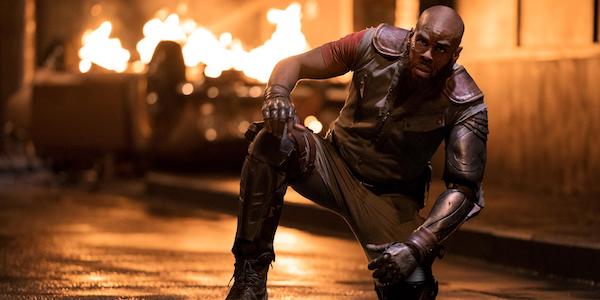COWBOY BEBOP: A Jazz Cover Band With Broken Rhythm

Movie lover & Los Angeles-based writer. BA in Film Criticism…
For some, Cowboy Bebop is simply an anime television series that originally aired in Japan in 1998 (eventually hitting stateside broadcast three years later) and ran for 26 “sessions”, which were then followed by a feature-length encore film in 2001. But for many, Cowboy Bebop is the anime, the medium’s finest achievement and one of the greatest artistic expressions of the last three decades. The work that became a new genre in and of itself, Bebop was a dazzling blend of space opera, spaghetti western, film noir, the Jazz Age, and Hong Kong action cinema. Its status as an artistic phenomenon was, and still is, unimpeachable.
It’s also the kind of work that seemingly would not translate well into a live-action version. But, after years of speculation, development, and production, writer Andre Nemec and showrunner Christopher Yost have finally delivered Cowboy Bebop, a live-action adaptation of the series, reimagined as a ten-session show for Netflix. Fans and newcomers alike could enjoy new iterations of Spike, Jet, Faye, and Ein, and all the adventures they could potentially embark on. If it sounds too good to be true, it is; Nemec and Yost were clearly so preoccupied with whether they could adapt the anime that they didn’t stop to think if they should.

The very first shot of Netflix’s Bebop announces its intentions quite plainly. From the darkness, we hear a volley of gunfire, before opening on a static image of a wall emblazoned with the words “Watanabe Casino,” merely grazed by bullets but otherwise largely intact. The on-screen text is an obvious reference to Shinichirō Watanabe, the director of the original anime on which this live-action adaptation is based, but the message is abundantly clear: Netflix has taken its shot at the creator’s classic anime and missed.
Watanabe still receives a consultant credit for the new series, but there is nothing in this work that seems to have been inspired by his original creation. Sure, a lot of names and faces are the same, but by converting Bebop from anime to live-action, Netflix has completely drained the show of its original spirit, churning out another plasticine product on its assembly line workforce. Flat, unimaginative, and haphazard edited, the live-action Cowboy Bebop does a complete disservice to the anime, dashing any hopes of a decent translation and sullying its good name in the process.
Three, Two, One, Let’s Jam
The basic framework for the live-action series hems close to its predecessor. The year is 2171, and bounty hunters Spike Spiegel (John Cho) and Jet Black (Mustafa Shakir) comprise the crew of the Bebop, a vessel capable of interplanetary travel. Together, they hunt the solar system’s most wanted criminals, turning them for the universal currency known as “woolongs,” allowing them to eat and operate another day.
Also in the mix is Faye Valentine (Daniella Pineda), a fellow bounty hunter with a mysterious past who reluctantly teams up with our two heroes to form a motley crew of space cowboys. Rounding out our orbit of main characters is Vicious (Alex Hassell), Spike’s nemesis and a notorious gangster in the Red Dragon Crime Syndicate, accompanied by his wife, Julia (Elena Satine), a haunted and enigmatic woman who was once the object of Spike’s affection.

While a handful of sessions stuck to a core narrative, the original Bebop was a largely episodic affair, freewheeling through various bounty-of-the-week missions while embracing a variety of styles from its cornucopia of influences. The live-action Bebop is unwilling to accept this lifestyle, leaning heavily on serialization to connect everyone and everything, greatly limiting the scope of the project. Despite having the entire solar system at its disposal, the new Bebop feels extremely limited by design, sticking to a tiny pocket of the universe rather than exploring the endless expanse of space.
The ten sessions are populated by many recognizable faces from the anime: there’s Asimov (Jan Uddin) and Katerina Solensan (Lydia Peckham), a pair of Bonnie and Clyde-esque fugitives who are peddling the dangerous sense-altering drug “Red Eye”; Pierrot Le Fou (Josh Randall), a lunatic, mad clown assassin bred from a laboratory experiment gone awry; and Ein, the Welsh Corgi data dog who also comes aboard the Bebop. There’s a familiarity that permeates every session, but these are only hollow recognitions as if the mere presence of these many notable supporting characters was the barometer for success.
Whatever Happens, Happens
This being a Netflix production, Cowboy Bebop suffers mightily from how increasingly flat its cinematography looks. The original Bebop was a vibrant, lively, and gorgeous series; this new version is completely worn down by Netflix’s digital sheen, effectively rendering it an ugly puddle of plastic muck. Locations look like hastily-designed sets. Costumes look like cheap cosplay. The awful look is further hampered by the prevalence of Dutch angles, adding a plethora of canted angles for the sake of having some kind of style, doled out liberally and never establishing a visual identity.
Editing is also largely problematic. The anime was smooth and kinetic and featured some of the finest action the medium had to offer. The live-action adaptation is listless, shambling about and lacking the original snap that brought Bebop for life. Action won’t leave the pulses pounding; it’ll have you reaching for the snooze button. Even as a television series, Cowboy Bebop is a fundamental embarrassment in regards to basic scene construction. If there was any indication that an anime series cannot be translated to live-action, it can all be traced back to Netflix’s failings here.
At least the live-action series had the good sense to keep the soundtrack by Yoko Kanno and The Seatbelts. If anything was iconic in the original Bebop, it was the music, from the jazzy intro of “Tank!” to the somber ballad of “The Real Folk Blues.” The staying power of Bebop’s music, cannot be diminished no matter what context. If this new Bebop is capable of doing anything, hopefully, it’s turning new fans onto Kanno’s previous work.

Performances are also wildly varied. Cho makes for an affable Spike, slipping into the lackadaisical nature of the bounty hunter without much difficulty. The trouble arrives during the fight sequences, which sedate rather than stimulate the senses. Despite getting into impressive shape, Cho is unable to throw a convincing punch or kick, coming off as stilted before the series awkwardly cuts to his stunt double doing all kinds of crazy flips. Better is Shakir as Jet, who handily runs away as series MVP as the disgruntled leader and clueless dad Jet. Shame he shares no real chemistry with Cho, often engaging in the most inane of conversations that come off as bad improv (toilets and herpes are common conversation topics).
Pineda brings a lot of enthusiasm to the role of Faye, but it’s largely misguided, mainly in part to Nemec’s egregious mishandling of the character. The once cool Valentine is now a spigot of profane one-liners, rattling off lame bon mots with all the finesse and precision of a Gatling gun. Poor writing also betrays Vicious and Julia, the once elusive duo now diminished to weak and simpering villains. A real disappointment for all characters involved.
And as for Radical Ed? Well, I’ll let you determine if the series is worth sitting through to see if that pays off.
Conclusion: Cowboy Bebop
A few choice moments in the live-action series remain, such as Spike casually lighting a cigarette as he hangs precariously from a tall building (upside down, no less). Details like that really capture the spirit of the old Bebop, and I wish there were a million more of them. For better or for worse, I can only hope that his new series will steer viewers to seek out the original anime – it really is a tremendous work. As it stands, the live-action version is a complete waste of time, lacking any wonder and existing as an unfitting adaptation of Watanabe’s classic series.
What do you think? Was the live-action Cowboy Bebop a success, or more often than not did it completely miss the mark? Let us know in the comments below!
Cowboy Bebop is now streaming on Netflix.
Does content like this matter to you?
Become a Member and support film journalism. Unlock access to all of Film Inquiry`s great articles. Join a community of like-minded readers who are passionate about cinema - get access to our private members Network, give back to independent filmmakers, and more.
Movie lover & Los Angeles-based writer. BA in Film Criticism & Media Theory from CSU Northridge. Unofficial Bond ally. Rhymes with “tequila.”













